What is Lightning Arrester Cost
Lightning arresters are sophisticated components designed to protect electrical systems from the damaging effects of lightning strikes. These devices serve as the first line of defense for structures and systems by intercepting the electrical surges generated during a lightning strike. They are crucial for preventing equipment damage, fires, and electrical system failures that can result from the immense electrical energy transferred through power lines or communication cables when a storm passes through an area.
These arresters work on the principle of providing a low-resistance path to ground for the surge of electricity. They are typically installed in high-risk areas such as power distribution systems, communication networks, and industrial machinery where the potential for electrical surges is significant. The operation of lightning arresters involves two key components: the metal oxide varistor (MOV) and the spark gap. The MOV is a non-linear resistor that conducts current well under normal conditions but becomes less conductive as the voltage across it increases. The spark gap is a conductive channel that only activates when the voltage surpasses a certain threshold, thus providing a route for the surge to dissipate safely.
Lightning arresters are essential for anyone responsible for maintaining electrical systems that are exposed to frequent thunderstorms or other conditions that may induce electrical surges. They are commonly used in both residential and commercial settings to protect valuable equipment and prevent downtime due to electrical disturbances. The cost of lightning arresters can vary significantly based on their complexity, size, and features, but they are generally considered a worthwhile investment for those needing to safeguard their electrical infrastructure.
Types of Lightning Arrester Cost
Several factors determine the cost of a lightning arrester, including its type, material, and application. Let's explore some common variations:
-
Early Streamer Emission (ESE) Rod Cost: ESE rods are advanced devices that can provide an extended protection zone compared to conventional lightning rods. The cost of these devices depends on their size and the specific requirements of the installation site.
-
Franklin Rod Cost: A traditional Franklin rod is a simple form of lightning protection that relies on a sharp metal point to intercept a lightning strike. The cost can vary based on its length and the material used.
-
Finial Cost for Installation: This includes not only the device itself but also the cost associated with its installation. The final cost for installation can be influenced by factors such as the complexity of the system, the height of the structure, and any additional materials needed.
-
Annual Maintenance Cost: To ensure continued protection, lightning arrestors require periodic checks and maintenance. The annual maintenance cost is an important consideration when budgeting for their protection.
These various costs need to be factored in when determining the overall budget for a lightning protection system.
How to choose Lightning Arrester Cost
Selecting the right type of lightning arrester is crucial for ensuring protection against potential threats in your specific context. When considering a purchase on Alibaba.com, businesses should assess factors like material composition based on their environment's conductivity (e.g., copper for higher conductivity or stainless steel for harsher conditions).
Functionality is another critical consideration; for instance, non-electronic arresters might be preferred in locations where electronic equipment is sensitive to magnetic fields. Moreover, understanding the application is key—whether it's for a building's protection system or an industrial setup—as this will determine the necessary ratings and type of arrester required.
Color might seem like an aesthetic choice but can also serve a practical purpose; red is often chosen for visibility during maintenance checks. Additionally, considering whether an arrester will be used in a marine environment may influence decisions regarding material type and robustness. Finally, cost-effectiveness over time should be taken into account; while some types may have a higher initial cost, they may offer longer service life which can translate into lower maintenance costs.
About Lightning Arrester Cost on Alibaba.com
Alibaba.com stands out as a global marketplace connecting businesses with a vast array of suppliers offering a diverse selection of lightning arresters. With over two decades of experience since its inception in 1999, Alibaba has established itself as a leading platform where businesses can source products tailored to their specific needs. The site's extensive network of suppliers ensures that buyers can find exactly what they're looking for – from industrial-grade surge arresters for power systems to robust grounding solutions for telecommunication networks.
The platform's user-friendly interface allows businesses to communicate easily with suppliers in their local language and manage orders efficiently through mobile devices. With features such as Trade Assurance, Alibaba.com provides buyers with peace of mind by safeguarding their payments until delivery is confirmed satisfactory. This commitment to security underscores Alibaba.com's dedication to quality service and customer satisfaction.
Choosing Alibaba.com as your sourcing platform means accessing a world of products at competitive prices while enjoying tailored trading experiences designed to help businesses thrive in the global market. The site's focus on facilitating easy international trade makes it an ideal partner for businesses seeking reliable lightning protection solutions.
Common FAQs for Lightning Arrester Cost
What is the primary function of a lightning arrester?
A lightning arrester is designed to protect buildings and electrical systems by diverting the potentially damaging electrical surge caused by a lightning strike to a safe path through a conductor, thereby preventing equipment damage and electrical fires.
How does a lightning arrester differ from a surge protector?
Surge protectors are designed to handle high-voltage spikes that can occur due to electrical faults, while lightning arresters specifically target lightning-induced surges.
Can lightning arresters be installed on any type of building?
In theory, lightning arresters can be installed on any building; however, it is crucial to select the right type and rating of arrester for the specific environmental conditions and electrical load requirements of the building.
Are there different types of lightning arresters for different applications?
Yes, there are various types of lightning arresters available, including Type 1, Type 2, Type 3, and Type 4, each designed for specific applications and levels of protection.
What materials are used to make lightning arresters?
Lightning arresters are typically made from durable materials such as copper, stainless steel, or aluminum to ensure they can withstand multiple lightning strikes and provide long-term protection.
How do I determine the appropriate rating for a lightning arrester?
Lightning arrester ratings should be selected based on the level of protection required. Higher voltage levels or those in areas with high lightning activity will need arresters with higher energy absorption capacities.
Are there lightweight options available for high-voltage transmission systems?
Yes, suppliers offer lightweight options made from materials like aluminum or fiberglass for high-voltage transmission systems, balancing the need for protection with weight considerations.
What is the lifespan of a lightning arrester?
The lifespan of a lightning arrester depends on its type, environmental conditions, and the number of lightning strikes it has to manage. Typically, well-maintained arresters can last for several years.
Can I customize a lightning arrester for my specific needs?
Many suppliers on Alibaba.com offer customized lightning arrester solutions tailored to specific customer requirements regarding energy handling capacity, environmental conditions, and operational needs.
Do surge protectors come with additional features like overvoltage protection?
Surge protectors often include additional features such as overvoltage protection to safeguard against voltage spikes and surges beyond standard operating ranges.
How often do lightning arresters need to be replaced?
The replacement frequency for lightning arresters varies based on their type, rating, environment, and the number of lightning strikes they mitigate. Regular inspections can help determine when a replacement is necessary.
Is it possible to retrofit an existing lightning protection system with new technologies?
Yes, it may be possible to retrofit an existing lightning protection system with new technologies that offer enhanced protection capabilities or operational benefits.


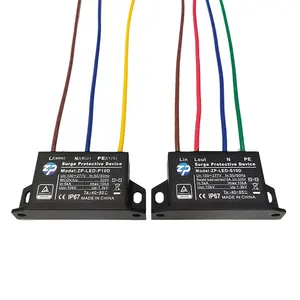



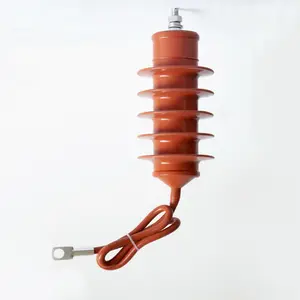

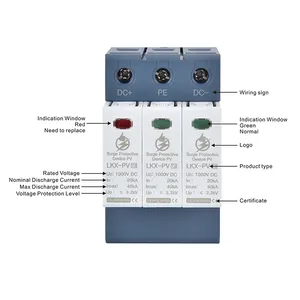







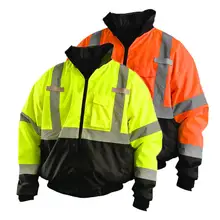
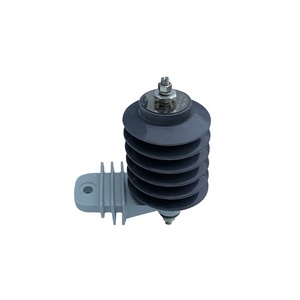





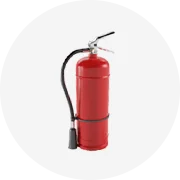
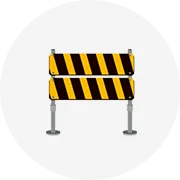








 浙公网安备 33010002000092号
浙公网安备 33010002000092号 浙B2-20120091-4
浙B2-20120091-4